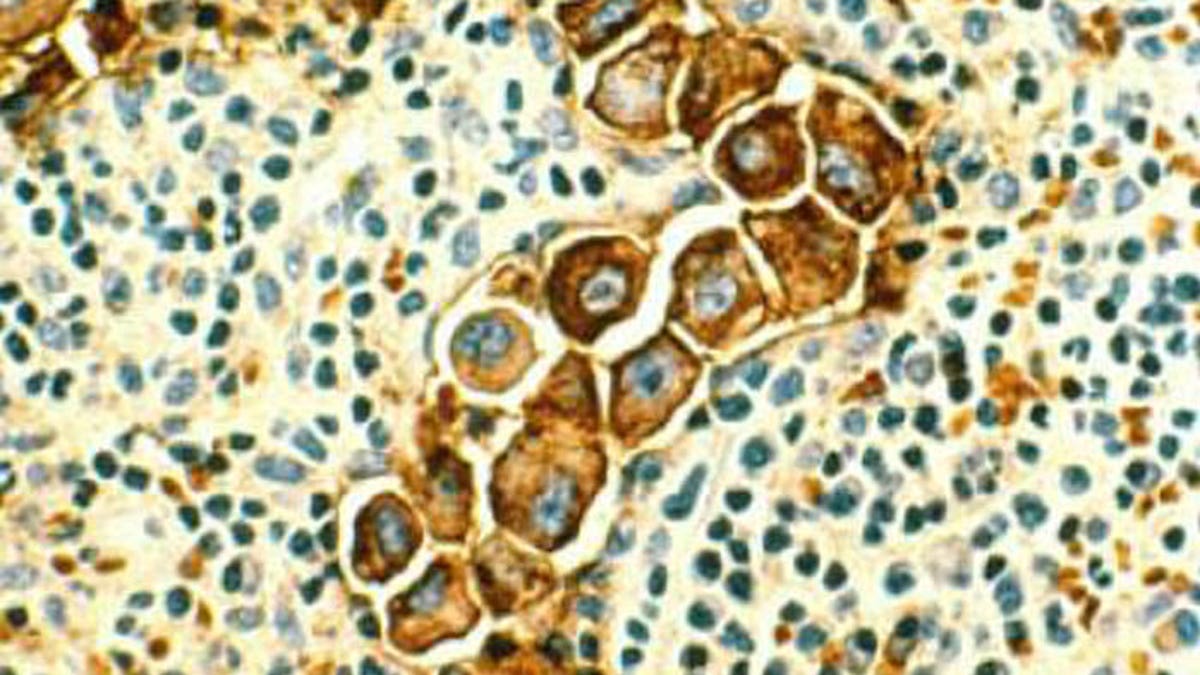
This image shows metastasized human breast cancer cells (magnified 400 times, stained brown) in lymph nodes. (National Cancer Institute)
Scientists in London have developed an ecological imaging test that may help determine which breast cancers are most likely to be deadly— an analysis that could in turn help doctors tailor individuals’ treatment more effectively.
The Ecosystem Diversity Index fuses a cancer imaging technique and methods used by ecologists to study animal and plant species. In a study published Tuesday in PLOS medicine, scientists at The Institute of Cancer Research, London, who developed the combined test, used the index to distinguish cancer cells from normal cells in tumors, according to a news release. They found that, based on the test, the more complex and diverse breast cancer is, the more likely it may be to advance and cause death. The institute helped fund the research, according to the release.
Study authors analyzed 1,026 samples of untreated breast tumors from three hospitals. They looked at three cell types: cancer cells; immune system lymphocytes; and stromal cells, which produce connective tissue.
They found patients with high-grade tumors that had a diameter larger than 5 centimeters, whose tumors were on the upper end of the Ecosystem Diversity Index, faced a 16 percent five-year survival rate, compared with a 50 percent survival rate at five years among tumors with low diversity scores. Researchers said the index predicted survival chances better than many other established tests.
"We have known for a while that genetic diversity between cancer cells in tumors is associated with more aggressive disease, and our new results also show that diversity of cells within the tumor microenvironment also contributes to aggressive breast cancer,” Dr. Rachael Natrajan, team leader in the Breast Cancer Now Toby Robins Research Centre at The Institute of Cancer Research, London, said in the release. “Integration of our new measure with genetic alterations can actually provide additional prognostic information from just genetics alone, and may pave the way for a new wave of diagnostic biomarkers."
When determining a patient’s survival chance, researchers also considered genetic factors. According to the release, the study marked the first time scientists accounted for both genetics and cell types around a tumor to predict an individual’s survival rate. They found that patients who had tumors with a high diversity score plus mutations in the p53 tumor had some of the poorest survival chances.
"In the future, we hope that by combining cell diversity scores with other factors that influence cancer survival, such as genetics and tumor size, we will be able to tell apart patients with more or less aggressive disease so we can identify those who might need different types of treatment,” lead study author Dr. Yinyin Yuan, team leader in the Centre for Evolution and Cancer at The Institute of Cancer Research, said in the release.
